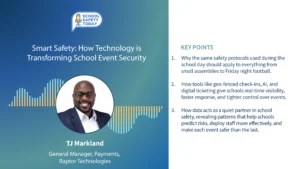How Universities can Use Technology in Their COVID Precautions
Across the nation, higher-ed leaders are grappling with the question of how they will ensure a continued safe on-campus environment for students, faculty, and staff in the middle of the COVID-19 pandemic. Contact tracing and location technologies play a large part in universities’ ability to monitor adherence to safety protocols such as social distancing and track potential COVID cases.
Fall marked an uncertain time for colleges and universities—and while some made it through face-to-face and hybrid semesters, others were forced to abruptly return to virtual learning following pockets of COVID-19 outbreaks. With winter break imminent, university officials know their handling of COVID safety protocols will be under a microscope.
When evaluating how they handled campus reopenings this fall, most colleges and universities acknowledge that they have not earned high marks, according to a Kaplan survey of admissions officers at more than 300 institutions of higher learning across the United States.
When asked to grade to their industry’s ‘reopening’ performance as a whole, taking into account factors like implementing new safety precautions, delivering courses, and communicating with students and parents, only 4 percent gave an A; 36 percent gave a B; 51 percent, a C; 9 percent, a D; and 1 percent, an F.
Innovative technologies for COVID—and beyond
At Dominican University (DU) in Illinois, university leaders have thought hard about how to manage the campus in order to keep commuters and resident students safe. DU normally houses 600-650 students, though this semester, all residences have been mandated single-occupancy, lowering the number of on-campus residents to about 400. Most of the university’s approximately 3,200 students are commuters.
Part of the DU’s COVID strategy includes a mask mandate, issuing social distancing guidelines, and using the #CampusClear app for self-monitoring and reporting. Another key part is Kiana Analytics‘ Contact Tracing and Facilities Management cloud-based digital platform, which leverages an institution’s existing Wi-Fi network (DU’s Wi-Fi partner, Extreme Networks, helped ensure a smooth launch) and uses device-based detection and location-based analytics to help stop the spread of the virus.
The solution offers zone alerts that combine a person’s positive COVID-19 test result with their location via campus wireless device registration, giving authorized university officials the ability to privately warn others who have been in close proximity to the person testing positive.
“What was really of interest to me was a way to do more detailed contact tracing on campus so we could respond appropriately and proactively to someone being ill or having a positive test,” said Jill Albin-Hill, DU’s Vice President for Operations and Technology and CIO. “If we only reacted, and went only on course schedule data, it would lead us to quarantine more people than necessary. From a campus management standpoint, I wanted to get as much data-driven information into the process.”
Albin-Hill said the location-based component of Kiana’s solution helps campus staff fill in potential gaps in contact tracing–say, for instance, if a student who tests positive forgets he or she has visited the library or doesn’t remember a last-minute dining hall trip that may have exposed other students.
The platform also helps Albin-Hill keep up with COVID compliance.
“I periodically check for hotspots, or too much density–one thing that’s always a concern is that resident students will congregate in lounges when nobody is here at night. This has given me a way to monitor that and know that nobody is doing that,” she said.
Kiana’s work with universities is based on its existing work in facilities management and location analytics. These technologies examine a specific location and identify variables such as where people are, how many people are in certain rooms, and how many people move between the rooms—all for increased efficiency and flow, said Nader Fathi, the company’s CEO.
It was a natural progression to determine how universities could use Kiana’s platform to ensure safe campus environments and speedy contact tracing.
“We sat down as a team and said, ‘We already have this data. It’s another way of presenting what we already have done,’” he said. With contact tracing, “there’s an issue of location, and how you watch for clustering or hot zones, and how long are people together in a location–data is a Rubik’s Cube, and you have to look at it from different angles.”
These technologies also help campus administrators prove that their campus is at 50 percent density.
“It’s been helpful to gauge whether we were right at our density goal, whether we could offer a few more classes on campus, or whether we needed to have less,” Albin-Hill said. Working with the registrar, university officials have been able to use their data to spread out classroom usage among floors in buildings or across multiple buildings to break up areas that may have brought together too many students at a time.
“We can show people the data and reports, and that gives them confidence–you don’t want to be known as the school that doesn’t adhere. This is a really strong element, and we can use it to show that we’re managing our campus,” she added.
Albin-Hill sees uses for Kiana’s platform beyond COVID, too.
“I’ve been thinking about post-COVID–I’m interested in helping with traffic patterns and space usage on campus,” she said, noting that some campus spaces are underutilized.
A campus exposure notification pilot expands statewide
In early November, the Michigan Department of Health and Human Services launched MI COVID Alert, an exposure notification app, after the app was piloted within the Michigan State University (MSU) campus community.
MI COVID Alert uses Bluetooth low-energy technology to detect nearby phones of other app users. The secure app can notify individuals when they may have been exposed to someone who has tested positive for COVID-19.
MSU President Samuel L. Stanley, Jr., M.D. approved a request from Michigan public health officials to launch a pilot of the app on campus to help determine if the app had statewide viability.
The app launched on October 15, and by October 18, MI COVID Alert had been downloaded nearly 10,000 times. Within two weeks of the launch, downloads had surpassed 30,000 and with additional communication outreach, the numbers continue to rise.
“The positive response demonstrates the commitment of the Spartan community to be part of the solution,” said Shawn Turner, professor in the College of Communication Arts and Sciences, who is leading the app pilot project for MSU, in a university news release. “Spartans want to do their part to slow the spread of this virus and they want to protect the people they care about. Downloading the app helps them do that.”
Despite meeting and exceeding download goals at MSU, the pilot will continue to run through the end of 2020.
“We are not done,” Turner said. “We’re going to work with businesses in East Lansing and throughout Ingham County to keep encouraging more people to download the app. The more people who download the app, the safer we will all be.”
—
Twitter – @MarketScale
Facebook – facebook.com/marketscale
LinkedIn – linkedin.com/company/marketscale








